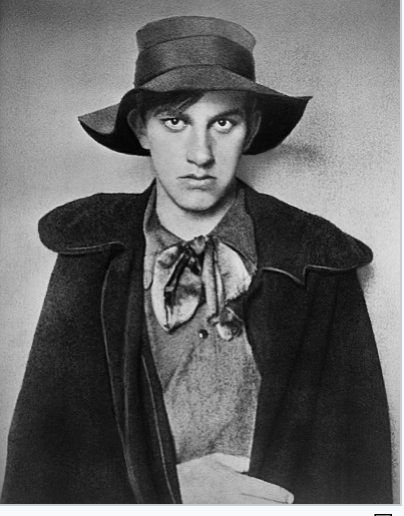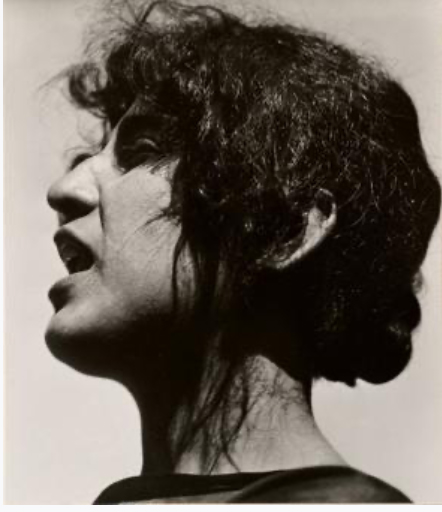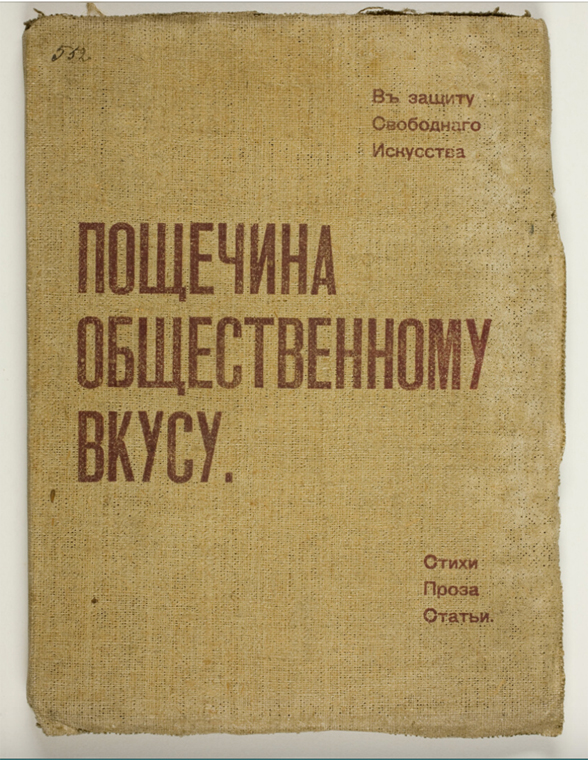
September 3, 2023
by Philip Gambone
As regular readers of this column know, I have a deep interest in literature inspired by Mexico: books both by native Mexican writers and by foreign writers who visited this country and were inspired to pen their impressions in poems, novels, and travel accounts. It will come as no surprise that of all the foreign writers who have come here, American authors outnumber all the rest. But Mexico has held out an attraction to many other foreign writers including those from England (D. H. Lawrence and Graham Greene, for example), France (André Breton, Antonin Artaud), Chile (Pablo Neruda), and Germany (Alexander von Humboldt, Ret Marut). Even a few Russian authors have come here and written about it.
One of those Russian writers was Vladimir Mayakovsky (1893-1930), one of the leading Futurist poets in the years prior to the Russian Revolution and in the first decade of the Soviet era. This "complicated rattle-bag" wrote poems that "did not wait to be received," writes Irish novelist Colum McCann. Instead, Mayakovsky's poems "went out and grabbed listeners by the neck." Those listeners included writers like Pablo Neruda, Allen Ginsberg and Jack Kerouac, all of whom were deeply influenced by Mayakovsky's strange, Cubist-like language, his lyricism, his unorthodox arrangement of lines, and his "irrepressible agitational urge," to quote from his translator Neil Cornwell. Small wonder that Russia's culture minister recently called Mayakovsky "the first rapper."

Mayakovsky at age 17
*
As a young boy, Mayakovsky was imaginative, energetic and obstinate. Gifted with a prodigious memory, he was already reciting poetry by heart at the age of five. In high school, he began to read radical literature; at 15, he joined the Bolsheviks. During his later teenage years, he devoted more and more time to political activity, which got him into trouble with the czar's police. He was imprisoned three times, spending five months in solitary confinement, where he began to write poetry.
In 1911, Mayakovsky entered art school in Moscow. There he met the Cubist painter David Burlyuk, a leading figure in the city's artistic avant-garde, who described him as "an unkempt, unwashed giant with the definite air of a hooligan." Burlyuk recognized that Mayakovsky's talents inclined more toward poetry than painting and introduced him to his friends in the Futurist movement, artists who championed scientific progress and radical thought. As writers, they were committed to a program of "making strange" or "defamiliarization." Mayakovsky enthusiastically took up their cause.

Mayakovsky by David Burlyuk
*
Before he was twenty, he published his first poems in an early Futurist manifesto, A Slap in the Face of Public Taste. "We alone are the face of our time," they declared, only too happy to throw the older writers—Pushkin, Dostoevsky, Tolstoy—"overboard from the ship of the Present." During the 1920s, Mayakovsky also began editing several avant-garde journals.
In 1925, this "generalissimo of the army of revolutionary minstrels," set out to visit the United States via Cuba and Mexico. As Luis Mario Schneider says in his Dos Poetas Rusos en México, Mayakovsky, a travel-loving bohemian, was one of the only Russian writers to visit Mexico who maintained "the attitude and exotic spirit that characterizes a traveler." He recorded his impressions in a little suite of nineteen poems and in a short travel book, My Discovery of America.
The book begins with a brief account of the eighteen days he spent crossing the Atlantic. "You get really fed up with the ocean," he wrote, "but it's boring without it." After a stop in Havana to take on coal, Mayakovsky's ship docked at Veracruz—"miserable-looking shoreline with small stunted houses." His visit to Mexico, he told journalists, was of "a purely literary nature, without any political significance." This was a half-truth, fashioned to placate the U.S. immigration authorities, who had yet to issue him a visa.
In Veracruz, he watched as the porters—"little men in hats half a meter wide"—fought with one another over the passengers' suitcases. Mayakovsky, who had grown up reading Russian translations of James Fenimore Cooper and Mayne Reid, asked "But where are the Indians?"
"These are the Indians," he was told.
Mayakovsky was dumbstruck, "as though before my very eyes peacocks were being turned into chickens." The shock of discovering that the glories of the Indigenous people's past were no more inspired a poem, entitled "Mexico": "Heroism / is not for now. / Montezuma is only a brand name of beer."

Mayakovsky by Diego Rivera
*
That night, he caught a train for the capital. Diego Rivera, the Communist painter, met him at the train station in Mexico City. At the time, Rivera was working on his series of murals for the Ministry of Education—"the world's first Communist mural," Mayakovsky enthusiastically wrote. Rivera, who understood Russian quite well, took Mayakovsky to the "Mexican Museum." This was the precursor of the National Museum of Anthropology. There the poet noted the Aztec stone calendars and the "double-snouted wind idols, whose faces caught up with each other."
Mayakovsky was interested to learn that modern Mexican art was an outgrowth from ancient Indigenous art and not from imitative forms brought over from Europe. "This idea," he wrote, "is a part—though perhaps not yet a realized part—of the idea of struggle and liberation from colonial slavery."
Rivera—"a huge man with a good stomach on him"—took Mayakovsky home for dinner. He and his wife—his second wife, Guadalupe Marín, not Frida Kahlo, whom Rivera had not yet met—served "purely Mexican things": coconut, followed by "really tasteless, heavy flatcakes or pancakes; minced meat rolled up in a mass of flour and a whole conflagration of pepper; and the whole thing "washed down with cheap vodka with a kick to it like moonshine—a kind of Havana cognac."

Guadalupe Marin. Rivera's second wife
*
It's curious that many of Mayakovsky's biographers make little of his visit to Mexico, preferring to focus on the segment of his trip when he visited the United States. But for those of us with an interest in Mexico, there is plenty in My Discovery of America to capture our attention.
The pinkish-yellow houses—"like sea sand at daybreak"—with their floral courtyards, multi-story terraces, and parrot cages immediately caught his eye. So, too, the churches, cathedrals and monasteries. He noted that Mexican señoritas would walk through Mexico City's grand cathedral, leaving behind their chaperones under the pretext of "religious innocence," only to sneak out through another door with a lover.
Mayakovsky registered everything that passed before his eyes: the pulquerías decorated with serape rugs; the nighttime streets ablaze with electric lights; the exotic food ("mango fruit—a caricature of a banana with a large hairy stone"); the shoeshine boys and lottery ticket sellers; the near worthless paper money, which necessitated that people carry around bags of coins; the souvenir shops ("for scrawny American women"); the banditry; the ubiquitous army troops; the turkey buzzards ("the peaceable crows of Mexico"). It all amounted to "an incomprehensible, idiosyncratic and amazing way of life."
On the other hand, he was disappointed that Mexican poetry proved to be "nothing but lyrics about sensuality, full of moans and whispers." Likewise, he found Mexican theater to be impoverished: "plays, opera and ballet lie fallow," he wrote. He was taken to a bullfight, which he hated. "The one thing that reconciles me to bullfighting is that King Alfonso of Spain is against it."

Red Flag and Watermelon
*
Mayakovsky was also disappointed not to meet more Communist comrades. As a fervent Communist, he found Mexico to be "a country cleaned out by civilizing American imperialists." His Communist friends took him around to the poor neighborhoods of Mexico City, where he saw "families of eight to ten crammed together in a single scruffy room" and where "emaciated titchy children eat boiled maize, sold right there and kept warm under filthy rags that the tradesman himself sleeps on at night."
He was happier about encountering many revolutionaries. "And since," he quipped, "in Mexico, everyone has either overthrown or is overthrowing, or wants to overthrow the current regime—they are all revolutionaries."
Mexico City's traffic, with its speeding cars and "rattling, heavy buses that are no more comfortable or capacious than our own conveyancing fleet," appalled him. Indeed, he found the city "the world's top town—for its number of car accidents." He estimated that the average expectation of life without injury was ten years. The number of murders also alarmed him as did the Mexicans' love of guns. "Everyone from the age of fifteen to seventy-five has one."
He was astonished by "the volcanic [political] tableau of Mexico," that is, by the fact that since 1894, the presidency of the country had "changed hands thirty-seven times." Moreover, there had been "five radical changes in the constitution." Nevertheless, he noted that one idea united everyone. "This is the thirst for liberation, a hatred for the enslavers, for the cruel ‘gringos,' who have made a colony out of Mexico and who have cut off half the territory."

Ever the agitator, Mayakovsky wrote that Mexican workers had come to understand that once American exploiters were overthrown they had to see to it that they would not be replaced by "homegrown ones."
As he departed from Mexico, now with his visa to enter the U.S., Mayakovsky reflected that he was heartened by his encounters with the "extremely hospitable and extremely pleasant and kind people." He wrapped up his impressions with a quotation from the end of his poem "Mexico":
